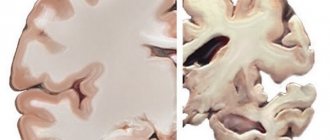Memory problems that are not associated with serious brain disorders are now experienced by about 10% of the population. Such memory disorders can be treated with special complex methods of restorative medicine. How to restore memory impairment? Solving memory problems.
The clinic’s specialists are engaged in restoring the lost properties of human memory. After completing the full course of treatment, most patients note not only memory restoration, but also a significant improvement in memory ability. We use only proven and only effective methods of restorative medicine. Memory problems will be solved!
Call +7495 1354402
We help in the most severe cases, even if previous treatment did not help!
| Initial consultation and examination 2,500 | Treatment and rehabilitation therapy from 5000 |
The role of the substance in descaling
The scale that accumulates on the walls, bottom and heating elements of the kettle is hardened deposits of salts (magnesium, calcium, iron) present in drinking water.
The acids that make up ready-made cleaning products enter into a chemical reaction, soften the plaque, and transform it into a soluble form. When heated, they destroy solid compounds and change their chemical composition at the molecular level. Citric acid is the most affordable, safe and mild of all possible acids. Thanks to its gentle effect, it does not have a negative effect on metal or plastic, but actively destroys calcium salts, helping to easily descale the kettle. That is why it is used to clean household appliances.
Baking soda enhances the effect of citric acid without boiling, so the method is suitable for all types of kettles and electrical appliances:
- Dissolve the granules in boiling water (1 tbsp per 1 liter).
- Fill the kettle to the top. Leave for 15 minutes.
- Carefully add baking soda (1 tsp per 1 liter). The reaction will be violent, place the kettle in a sink or deep basin.
- After 20–30 minutes, drain the solution and rinse the body thoroughly with a soft sponge.
- Boil clean water 2-3 times.
How to clean a surface using traditional methods?
The appearance of lime deposits is a natural process. A light coating on the inside of pots and kettles is associated with the accumulation of sediment, which is formed as a result of heating hard water containing a large number of various impurities.
The trace elements that make up the liquid (potassium, magnesium, etc.) form the basis of such difficult-to-remove accumulation. In the process of heating water, chemical reactions begin to occur, producing carbon dioxide and solid sediment.
Lemon acid
Citric acid is a widely used descaling agent for dishes. If there is not too much sediment on the surface, then local treatment can be carried out.
To do this, you can simply apply acid granules to a damp sponge and rub the desired areas, then wash the pan in water. This method does not always give good results.
If the result is unsatisfactory, then you can use another technique:
- Fill the pan with water so that all areas with scale are covered with it.
- Add a packet of citric acid.
- Bring the solution to a boil.
- Boil for another quarter of an hour.
- Turn off the stove.
- After the water has cooled, wash the pan.
Table vinegar is a worthy alternative to special descalers. The effect of such cleaning is associated with a chemical reaction in which acetic acid reacts with precipitated calcium and magnesium salts.
Directions for use (based on a container volume of 3-5 liters):
pour 1 cup of vinegar into an empty pan;
- add water;
- boil;
- leave to simmer for 5 minutes;
- switch off;
- set the pan aside until it cools completely;
- drain the solution;
- rinse the container.
The downside of this method of descaling is the pungent, specific smell of vinegar, which only intensifies when heated. The resulting steam can be dangerous, so it is best to carry out all work with good ventilation.
Another vinegar-based method:
- Moisten the inside of the pan generously with undiluted vinegar using a napkin.
- Leave the container to stand for 2 hours.
- Rinse with a sponge.
This method may be ineffective with a thick layer of scale.
Baking soda creates an alkaline environment that effectively attacks scale deposits.
The abrasive effect of such cleaning is small, so the method of removing deposits is well suited for almost all types of surfaces.
Cleaning steps based on a 5 liter vessel:
- pour water into the container;
- add ½ standard pack of soda;
- bring to a boil;
- leave to boil for at least 2 hours;
- remove from heat;
- cool to room temperature;
- rinse thoroughly.
Prolonged boiling will cause the water to begin to evaporate, so it will need to be added during the process.
Cucumber pickle
The acid contained in cucumber pickle can be used as an effective descaling agent.
The cleaning process is very simple:
- Pour in brine until all areas of scale are covered.
- Leave the pan standing like this for about a day.
- Drain.
- Clean the inside using the hard side of a sponge and dish detergent.
- Rinse.
Whey can also be used in a similar way.
For use as a descaling agent, ascorbic acid is ground into powder. Depending on the volume of the pan, prepare a solution based on the proportion: 1 tablespoon of powder for every liter of water.
The resulting solution is poured into a container and brought to a boil. After the pan has cooled, the contents are drained and the pan itself is washed.
We suggest you read why water appears in the drum in a washing machine
Apple or potato peels can also help remove scale and add shine to the surface. The effect is explained by a combination of high heating temperature and substances present in potatoes and apples.
Procedure:
- the peel is placed in a container and filled with water;
- bring to a boil;
- boil for half an hour;
- Rinse the inside of the pan in running water.
The more cleanings used, the better the result.
Carbonated drinks will also help in removing limescale from the surface of pans. It is removed by exposing the sediment to carbon dioxide and citric acid present in the drinks.
Procedure for descaling:
- Pour sparkling water into the pan so that all lime deposits are covered with liquid.
- Boil.
- Set aside for 8-10 hours.
- Drain.
- Rinse the dishes.
Memory tests in older people
A memory test helps assess memory performance in older people. Let's consider several testing options.
Memory test No. 1. Read the written 25 words within 60 seconds. Over the next 5 minutes, write down on a piece of paper all the words that you remember.
Wheat, road, door, quarter, train, cartoon, perfume, notebook, drawing, travel, week, island, Tunisia, man, herbarium, motorcycle, square, illusion, woman, taxi, stomach, music, dish, medal, forget-me-not.
- Reproduction of more than 20 words indicates phenomenal memory.
- Memorizing 13-20 words means you can rely on your memory, but you need to regularly stimulate your brain activity.
- Less than 10 words indicates your pathological inattention.
Memory test No. 2. Write a list of contacts from your phone. 5-10 numbers are enough. Memorize them. Try repeating them and writing them down on a new piece of paper without prompting. Return to this list the next day, the next day, the next week.
- If you were able to write most of the contacts correctly, then your memory is fine.
- If confusion in numbers begins already from the 4-5th character in the number, then it is obvious that you have memory problems.
- If after a while you cannot remember a single number, then you only have short-term memory.
A more extensive memory test for adults can be taken online on the Internet.
Another test
Features when cleaning different types of kettles
When starting to descale pots, you should definitely take into account the material from which they are made. This circumstance cannot be ignored, since violation of the care rules can lead to damage to kitchen utensils.
Aluminum cookware
Aluminum pans, when regularly used for boiling high-hardness water, quickly lose their appearance. This material oxidizes and darkens when exposed to food and water.
For aluminum, good results will be obtained by boiling with brine, using solutions of citric or acetic acid, or using apple peelings.
The peculiarity of the material imposes a number of restrictions on cleaning such pans. All the “don’ts” when removing plaque from aluminum cookware:
- use products with chlorine;
- use abrasives (steel wool, soda, etc.).
Preparations that are intended for dishwashers cannot be used to treat aluminum, as they can react chemically with this metal.
Convenient and beautiful dishes coated with enamel also begin to become overgrown with lime deposits when water boils. At the initial stage, the salts that form the sediment have a loose consistency, but over time they become hard, worsening the appearance of the dishes.
Many methods are suitable for cleaning, excluding aggressive mechanical action and concentrated acids.
Can be used:
- brine,
- peeling potatoes,
- soda
Cookware with enamel defects on the inside should not be used for cooking.
Made of stainless steel
Stainless steel pans are durable, laconic, and last a very long time. These things are quite easy to take care of. But the problem of scale formation in relation to stainless steel is also relevant.
The ability of the material to withstand the effects of household chemicals allows for effective cleaning. You can use almost any recipe, including: citric acid, baking soda, vinegar, etc.
Using a citric acid solution to remove scale, especially in combination with additional caustic components, is not possible for all types of kettles. Some materials do not tolerate interaction with such substances, and electrical appliances fail over time.
To safely use citric acid at home, you need to consider the type of kettle:
- Enameled - descaling using any acids is prohibited. This treatment leads to thinning of the enamel, the appearance of cracks and chips, and a reduction in service life. To remove scale, you can use baking soda or other mild abrasives.
- Plastic - cleaning the inside of the case with lemon is acceptable, but without boiling. Acid has a negative effect on plastic. It is also better to avoid vinegar and Coca-Cola.
- Glass – does not tolerate contact with abrasives, hard sponges, or brushes. It is preferable to clean the kettle using citric acid using the boiling method. As a result of this treatment, it will not only be possible to get rid of scale, but also restore absolute transparency and radiance to the glass.
- Steel body - will withstand contact with any acids. A combination of lemon with vinegar, soda or ammonia is acceptable.
- Ceramic - can be cleaned in any way, is not affected by acids.
- Aluminum, copper or brass body is sensitive to caustic substances; contact with lemon juice may change color or darken. For descaling, you should use only proven ready-made products.
We suggest you familiarize yourself with How to remove traces of tape (paper or double-sided) from leather, fabric, linoleum, wood, metal, glass, and also how to remove residues from mirrors and doors?
Before descaling the electric kettle with citric acid, it is worth checking what material the heating element is made of. Most often it is stainless steel, which does not react to interaction with caustic substances. In cheap analogues, heating elements made of low-quality alloys can be installed. Lemon juice has a detrimental effect on them, shortening their service life.
Types of senile forgetfulness
| Varieties | Manifestations of memory loss |
| By prevalence |
|
| By time |
|
| For lost events |
|
| By rate of loss |
|
| Global amnesia |
|
| Visual | impossible to recognize the people you meet |
| Selective | individual episodes pop up |
Asthenic syndrome
Memory problems in older people arise with the development of asthenic syndrome, a psychopathological disorder that is accompanied by the following clinical picture:
- increased irritability;
- insomnia;
- nervousness;
- headache;
- daytime sleepiness;
- absent-mindedness;
- forgetfulness;
- weather dependence;
- weakness;
- blood pressure surges;
- heart rhythm disturbance.
Provoking factors for the appearance of asthenic syndrome in older people can be:
- initial phase of schizophrenia;
- atherosclerosis;
- traumatic brain injury;
- oncological pathologies;
- abscesses;
- meningitis;
- encephalitis;
- viral hepatitis;
- brucellosis;
- heart failure;
- multiple sclerosis;
- arterial hypertension.
Articles on the topic
- Tablets for dizziness and tinnitus: how to take medications
- Memory medicine for the elderly - a list of effective drugs with descriptions and contraindications
- Pregabalin - instructions for use and analogues
Amnesia
In old age, pathological loss of memory about past and current events in life sometimes occurs. This condition is called amnesia. The following factors influence memory loss:
- vascular disorders;
- age-related degenerative processes in the brain;
- tumors;
- vascular dementia;
- brain atrophy;
- diseases of the central nervous system;
- neuroinfections;
- toxic brain damage;
- mental disorders.
Doctors classify amnesia by the presence of the following signs:
| View | Manifestations |
| Dissociative | Events that caused psychological trauma disappear from memory |
| Retrograde | remember only what happened before the traumatic factor |
| Fixation | no memory of today's events |
| Anterograde | forget everything that happened after the injury |
| Procedural | loss of household skills - how to use a knife, brush teeth |
| Total | people don't remember anything, including themselves |
Paramnesia
Elderly people are characterized by the appearance of distorted memories, to which their own fantasies are added. This condition is called paramnesia and has several types:
| Variety | Manifestations of violations |
| Confabulation | replacement of fragments of real events with invented facts that are presented as reality |
| Pseudo-reminiscence | a memory is replaced by another from real life |
| Cryptomnesia | information from films and books is passed off as experienced events |
| Echomnesia | people feel that history has already happened to them, although in reality it did not happen |
| Palimpsest |
|
Top 3 special tools
If folk remedies are insufficiently effective, store-bought household chemicals designed to remove scale from dishes will come to the rescue.
Antiscale
The special product Anti-Scaling TM Zolushka (manufactured in the Russian Federation) is intended for removing lime deposits from the inner surface of teapots and pans. The exception is enamel cookware, for which this product is not intended.
Advantages of use:
- biodegradability;
- affordable price;
- Ease of use;
- non-toxic;
- efficiency.
Very easy to use:
- Pour cold or warm water into the pan.
- Dissolve the contents of the sachets based on the proportion - 1 sachet per 4-5 liters of water.
- Stir.
- Leave to stand for 20 minutes.
- Rinse.
In addition to pots, Antiscale can be used in electric kettles, regular kettles, and irons. The price per bag is less than 20 rubles.
Chistin Antiscale
The cleaning product produced in the Russian Federation is available in small packages of 75 grams. Chistin can be used to descale teapots, pots, irons, boilers, etc. The product is even suitable for cleaning enamel dishes.
To prepare the solution, dilute the contents of the package in 1 liter of warm (about 40°C) water and leave for half an hour. After this, wash the pans with a sponge in running water. The cost of Chistina is about 40 rubles per package.
Romax Boom
The drug TM Romax Boom is available in 0.3 liter bottles. The product is suitable for stainless steel and glass, but cannot be used for cleaning enamel containers.
Application:
- Prepare a solution based on the ratio - 0.5 liters. water – 100 ml Antiscale.
- Pour the solution into the pan.
- Leave to stand without heating for about half an hour.
- Drain the liquid.
- Rinse the pan with water.
The product is produced in Belarus. A bottle costs about 45 rubles.
How much citric acid is needed to clean a kettle?
In order to get rid of scale in a kettle without damaging the metal or plastic, it is important to correctly calculate the amount of citric acid. The proportions of use of the substance per 1 liter of water depend on the degree of contamination:
- for minor deposits - 50 g (2 tbsp.) dry powder;
- with multi-layer plaque – 100 g;
- to prevent the appearance of solid sediment - 1 tbsp. l.
It is not advisable to pour a larger amount, as you may damage the device body or heating element. If the recommended rate is not enough to remove scale, the cleaning procedure should be repeated. In this case, you can use additional cleaning components (vinegar, soda), if permitted for a specific type of material.
You can also use fresh lemon to descale your kettle:
- whole fruit, cut into slices - for severe contamination;
- half - with a small plaque and for prevention.
How to boil a kettle with citric acid
Using the long-term boiling method, you can descale the kettle with citric acid if the heating element in the electrical appliance is made in the shape of a disk and the layer of deposits is dense (more than 2 mm).
Algorithm of actions:
- Wash the cabinet thoroughly using dishwashing detergent and a mildly abrasive sponge.
- Fill with water to 2/3 of the total volume.
- Add lemon granules at the rate of 2 tbsp. l. for 1 liter of water. For a plastic electric kettle, reduce the concentration of the substance by 2 times.
- Boil the water. After boiling, keep a regular kettle on low heat for 5–7 minutes.
- Leave for 1-2 hours to cool.
- Wash the inside surface and bottom of the appliance from scale with a soft sponge.
- Rinse well. Fill with clean filtered water and boil again.
- Drain the boiling water. Dry the dishes.
Cleaning the kettle with citric acid. This method is non-toxic and not harmful at all. All the scale will be cleared in 5 minutes.
To remove loose deposits, do not use hard brushes, scrub the residue with metal wool, or scrape with a knife or sharp objects. Otherwise, the case may be damaged.
Optimal cleaning frequency
Some modern models are designed in such a way that dirty filters are simply replaced with new ones. But if this is not possible, then cleaning is inevitable.
It is worth remembering that if you clean the kitchen hood from grease with ordinary detergents at least once a month, this will make the task much easier. Typically, radical cleaning is carried out once every 3 months. In particularly advanced cases, layers of fat can be carefully removed with a sharp object. But don’t delay cleaning, as this will make cleaning in the future much more difficult.
Each housewife independently determines the optimal frequency of cleaning her kitchen appliance. This is a purely individual matter, since it depends on the intensity of use of the unit, the characteristics of cooking, the number of family members and even the temperament of the household. The video below shows how to properly clean a kitchen hood at home.
For large families who prefer fried foods, you will have to take care of replacing grease filters quarterly. The frequency of general cleaning is once every 2-3 months. Filters are cleaned monthly. The body of the structure is washed weekly.
Prohibitions
In an effort to descale your pots as efficiently and quickly as possible, you need to remember a number of prohibitions when processing.
These include the following:
- Do not use chemicals that are not designed to care for cookware to clean the inside of the pan. Such experiments can not only damage the material of the pan, but also cause harm to health.
- You should also not try to speed up the process by using sharp and abrasive objects (sandpaper, knife, etc.) - the surface can be seriously damaged.
We suggest you familiarize yourself with how to clean a washing machine
Preparatory activities
Before cleaning the hood, you must arm yourself with the factory instructions for the device and familiarize yourself with the manufacturer’s recommendations for care and operation. The paper should indicate how often to clean the hood and what cleaning products are suitable for cleaning.
Treatment is carried out only after the device is completely de-energized. Therefore, you will have to figure out how the hood turns off - otherwise, if liquid gets inside the housing, you risk getting a short circuit and electric shock.
Does your kitchen have a hood?
Preventive measures: how to prevent the formation of lime deposits?
To reduce the possible likelihood of limescale deposits forming on pots and other utensils, it is advisable to use preventive measures.
These include:
- Using softened water for cooking. This can be achieved by installing a filtration system and using purchased purified water.
- After each cooking, the dishes must be washed thoroughly. In this case, plaque will not accumulate on the walls and bottom.
Impaired short-term memory
Memory functionally and anatomically consists of short-term and long-term components. Short-term memory has a relatively small volume and is designed to retain semantic images of received information for from a few seconds to three days. During this period, information is processed and transferred to long-term memory, which has an almost unlimited capacity.
Short-term memory is the most vulnerable component of the memory system. It plays a key role in remembering. When it is weakened, the ability to record current events is reduced. Such patients develop forgetfulness, making it difficult to perform even simple everyday tasks. The ability to learn is also greatly reduced.
Temporary amnesia due to severe alcohol intoxication, traumatic brain injury, and other conditions leading to an eclipse of consciousness is also caused by a transient complete shutdown of short-term memory. In this case, events that do not have time to move into long-term memory disappear.
Complete loss of short-term memory (fixation amnesia) is observed in Korsakoff syndrome. Characteristic of dementia and advanced stages of alcoholism. Such patients completely lose the ability to remember current events and are therefore completely socially maladjusted. At the same time, events preceding the onset of fixation amnesia are stored in memory.
How to remove scale without heating
In advanced cases, you can clean the kettle with citric acid with the addition of baking soda and vinegar. Sodium enhances the acid's action, and vinegar makes the reaction powerful.
Video instructions - how to simply and effectively remove a thick layer of scale in a kettle.
Algorithm of actions:
- Pour boiling water into the dishes (2/3 of the total volume).
- Add baking soda: 2 tbsp. l. for 1 liter of water.
- Leave for 30–45 minutes.
- Drain the waste water. Don't rinse! Some of the soda must remain to react with the acidic components.
- Fill the kettle 2/3 with hot water, dissolve the acid (25 g per 1 liter of water).
- After 30 minutes, drain the solution. Rinse the inside of the case thoroughly, trying to remove the softened part of the plaque.
- Dilute vinegar (70%) with hot water (100 ml per 1 l).
- After 1 hour, rinse.
After this treatment, the plaque becomes soft and pasty. It can be easily removed from the walls with a regular sponge.
Master class - descaling a kettle: 7 most effective methods are offered.
After washing, the kettle must be boiled, changing the water twice to remove any remaining cleaning products and the unpleasant odor from vinegar.
The method is suitable for washing glass teapots. It is also safe for stainless steel and ceramics. But you should not use the recipe to remove plaque in an electric kettle. This combination of cleaning agents can damage the plastic housing and heating element.
To descale the kettle without heating, you will need cold water and 2 packs of citric acid:
- Fill the container with water.
- Add the granules and mix thoroughly until completely dissolved.
- Leave for at least 5 hours.
- Rinse.
This gentle method can be used to clean any type of electric kettle, including one with an open heating element.
Citric acid is a safe home method for descaling a kettle. Even if a small part of the product remains on the inner surface of the housing and gets into food, there is no danger to health.
Recommendations
Expert advice will help you effectively deal with lime deposits and keep this process under control:
- The intensity of sediment accumulation is directly related to the hardness of the water used.
- Sediment in the pan not only looks unsightly, but also negatively affects your health.
- Timely descaling allows the pan to heat up faster, since due to its physical properties, lime insulates heat, lengthening the cooking process.
- Before you start cleaning the pan, you need to make sure that the chosen method is safe for the coating.
- After cleaning scale using any method (even using food products, such as soda, vinegar, etc.), the surface should be thoroughly washed.
- Most products may not be able to cope with a thick layer of lime the first time. In this case, the procedure will have to be repeated several times.
Keeping your cookware clean not only inside but also outside will extend its life and keep your kitchen appliances hygienic.
This section will tell you about methods for cleaning various household appliances from scale.
Therapy for negative memory problems
To choose the right treatment tactics in each case, it is necessary to find and identify the causes of the problem. Often the very weakening of memorization and memory processes is a direct consequence of mental and somatic conditions and abnormalities, therefore medical correction of brain disorders occurs simultaneously with the correct therapy of primary diseases.
Usually such deviations are treated for a long time, and in rare cases even until the end of life.
Self-medication in such situations is categorically unacceptable, because dangerous diseases accompanied by memory failures are recognized only by specialists. That is why, when they are detected, you need to consult a doctor who will diagnose the main problem, prescribe the correct treatment, which will further prevent the progression of serious stages of dementia.
In each such therapy, corrective measures are used that are aimed at normalizing and improving brain functions.
What can be done to prevent violations?
Poor memory cannot be cured with drugs, but it can be significantly improved if you are seriously interested in it.
- Eliminate bad habits from your life, engage in accessible sports, regularly consult a doctor to treat emerging somatic diseases: memory impairment and a healthy body are not compatible.
- Consciously and wisely observe the work and rest schedule.
- Healthy sleep with a normal duration is the basis for high-quality brain activity, since it is in the sleep state that the brain continues to sort information received during the waking period and records it in long-term memory. If a person suffers from insomnia and lack of adequate sleep, then memory impairment is inevitable.
- Review your diet. Include in your daily diet dishes made from fatty varieties of sea fish, containing healthy, easily digestible iodine and polyunsaturated fatty acids, as well as omega-3, which improve intellectual abilities. In addition, fresh seasonal vegetables, whole grain dishes, pumpkin seeds and various types of nuts are beneficial.
- Stick to a drinking regime, because dehydration negatively affects the functioning of the human nervous system.
- Make time for daily intellectual activities, read fiction, solve various types of crossword puzzles, do exercises to improve your memory, and your efforts will be crowned with success.
- Create new healthy habits to train your memory. For example, memorize phone numbers or memorize poems.
Treatment of memory disorders is a complex process, but with high-quality diagnosis and proper therapy, their progression can be significantly slowed down. Therefore, as soon as you or your loved ones have memory problems, do not delay visiting a doctor, because they accompany a large number of neurological diseases.
Proven folk wisdom says that those who do not use their memory can very soon lose it. If you want to meet your maturity with a well-functioning brain, without memory impairment, capable of thinking clearly and remembering important information in a timely manner, load it, follow the doctors’ recommendations, and your memory will be the envy of everyone.
Descaling with citric acid and soda
Using lemon decoction, you can clean a glass or plastic kettle from scale, as well as carry out preventive cleaning of the body.
Algorithm of actions:
- In any container, prepare a decoction: 1 unpeeled lemon, cut into slices, per 2 liters of water. Bring to a boil, simmer for 5–7 minutes.
- Without removing the lemon, pour boiling water into the kettle.
- Leave for 2-3 hours until the liquid has cooled.
- Clean the housing using a soft sponge. If the deposit remains, refill the solution, first bringing it to a boil in another container.
See how quickly, easily and safely you can remove scale from a kettle using lemon.
The method of descaling with boiled lemon decoction is safe for all types of teapots. The solution gently corrodes plaque, makes it loose, and helps clean the body without resorting to caustic chemicals or harsh methods.












